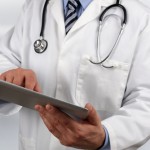Report shows interoperable EHRs have major benefits on industry
Of all the major changes that the health care industry has been working on implementing, reduced health care costs and enhanced patient safety are two of the main improvements on the radar. Over the past few months, the sector has come a long way in reaching these goals, thanks to the help of electronic health records.
As more physicians and hospital facilities begin to adopt EHRs, interoperability has improved across the health care continuum. An industry where sharing essential patient data between health providers is possible is one that will continuously improve patient care.
Report shows EHRs are crucial for enhanced care
HEALTHeLINK, Western New York’s clinical information exchange, recently conducted a study that found EHR adoption has improved interoperability and resulted in financial benefits across the industry. The Buffalo News released a report in which Daniel E. Porreca, the executive director of HEALTHeLINK, talks about the study. One of the findings showed that less time is wasted and unnecessary treatments are reduced by 52 percent when health IT enables providers to electronically track their patients’ past procedures and medications.
The New York health information exchange also took a look at whether EHRs had the potential to enhance patient safety and reduce health care costs.
“Unnecessary duplication of tests and exams is a significant financial burden on our healthcare system,” Porreca told The Buffalo News. “That cost, combined with the adverse impact on patients who may be unnecessarily exposed to radiation, and experience the hassle of waiting in the emergency room, makes quite clear the value of this technology.”
While the advantages in terms of health care costs, efficiency and safety are clear, Porreca noted that he hoped health professionals would not think that these advantages are all that EHR systems can offer. In the report, he reminded the industry that there are several additional ways health IT is valuable to practices and facilities.
The interoperability that EHRs provide, for example, drastically increases efficiency throughout the sector. Patients usually have more than one health professional treating them, such as primary doctors and specialty physicians, so when a patient’s data gathered at one doctor’s visit can instantly be sent to another practice if necessary, patient care improves.
“Exchanging information includes knowing both when a test or exam was administered and, more importantly, the most current results,” Porreca continued. “Office staff are not calling and waiting on hold or waiting by the fax machine for the information. The results are immediately available for patients who have consented.”
Approaching potential obstacles
While many of the health providers across the continuum have implemented EHR systems into their organizations, concerns about patient safety are primarily what is holding practices that rely on paper-based procedures and documentation back.
Porreca noted that HEALTHeLINK, as a member of the Statewide Health Information Network of New York, has learned to overcome these obstacles. SHIN-NY uses EHRs to create a network of connected health care facilities throughout New York.
“The SHIN-NY’s security requirements are strict, meaning that a patient’s health records will be publicly accessible,” SHIN-NY officials state on their website. “Security measures include encryption and identity proofing, password protection, intrusion detection, and multiple firewalls.”
SHIN-NY has noticed that challenges like integrating brand new systems into practices’ workflows and ease of use have made connecting EHRs across New York difficult at times, but, like the industry itself, HEALTHeLINK is improving its ability to overcome these challenges. Health IT developers are continuously enhancing their systems to create technology that is more mature. Clinical information exchange is improving throughout the health care sector and is expected to continue on this path as EHR systems become more advanced.



